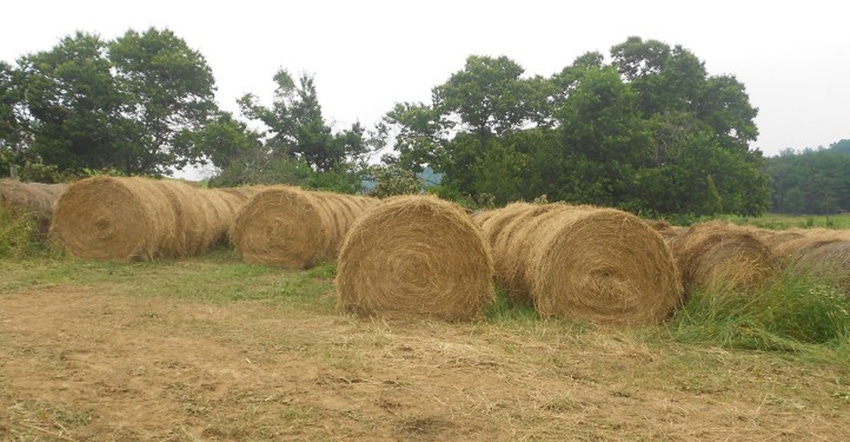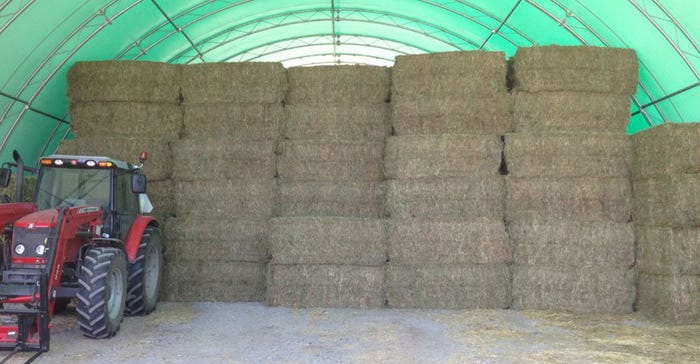October 2, 2017

By Al Gahler
The end of the growing season is near, and for cattle producers in Ohio, that means the beginning of the season that challenges the profitability of a cow-calf operation more than any other aspect. That’s right, feeding a cow through the winter is the No. 1 cost of production, and the days of $2.50 and higher feeder calves that made it pretty easy to pay the winter feed bill are a fond but distant memory.
The difference between the producer that has had and will have continued success in a slightly different economic climate and the ones who have and will struggle will come down to management. Not just marketing management, but input management, or in other words, feed and nutrition.
Most anyone involved in agriculture in Ohio has very likely heard about the concept of 4R management in agronomic crop production in order to preserve the soil and ensure water quality — using the right fertilizer or pesticide product, putting it in the right place, at the right rate, at the right time. The cattle producer who will be the most cost-effective at getting his or her cows through the winter while maintaining proper body condition and herd health will likely be the one making the most money come weaning time on the next calf crop. That producer will be feeding the right amount of the right feedstuff to the right contemporary group of cattle at the right time of the year.
How does one know what those 4 R’s are for feeding the cowherd? Well, there are 4 main factors a producer needs to consider — the nutrient value of available feedstuffs, the cost of production or purchase price of those feedstuffs, the storage of those feedstuffs, and the nutrient needs of each age group of cattle. To simplify the rest of this discussion, we will focus on the one main feedstuff utilized to winter most beef cows in Ohio: hay.

STORAGE: Consider how your hay was stored, and sample before feeding.

Nutrient content of feed. 2017 was a challenging year to make quality hay in Ohio. Yield was significant on most farms, and most producers consider a big crop to be a good crop. But is it? How do you know what the nutrient content of that hay is without a forage test? Was the hay made dry with no rain after being cut? Is any bale of hay you can purchase for a reasonable price that looks or smells good going to have enough protein and energy to maintain your cows? A nutrient test on hay will cost anywhere from $20 to $50. So if you have three cuttings from the same field, $150 will tell you what is inside the bale. Compare that to the cost of one lost pregnancy, or one 2-year-old that does not breed back.
Cost of production. Many producers raise their own hay and, therefore, have no real cost in it other than the fuel in the tractor and a little bit of fertilizer, right? What about opportunity cost of making that hay and using the ground for extended grazing or crops, and then purchasing your hay? There is realistic market value for that hay that must be applied to accurately make best management decisions. Where is that hay stored? In a barn, on a field edge under a tree line, in a stack of round bales alongside the barn? Was that hay brought in from the field right after baling, or did it sit for two weeks and collect rain or floodwater first? When you take that forage sample, do you sample it at the time of baling, or at the beginning of the feeding period so you can account for storage loss?
Age groups. Do weaned heifer calves, bred heifers, coming 2-year-olds, and mature cows all have the same nutrient requirements? What about fall calving? Does that cow hitting peak lactation on Nov. 1 have any different nutrient needs than a midgestation spring calver?
Most producers know the answers to these questions on each of the four factors presented or know how to get the answers. And for those that do, their key to success is choosing to use that information. For those that do not know the answers, or how to find them, seek out advice from your county Extension educator, nutritionist, feed salesperson, veterinarian, or all of the above, and learn how to become a “4R” cow-calf producer. Your cows acheter viagra and your pocketbook will thank you.
For more information on forage testing, interpreting results, reducing storage loss in hay and formulating your feeding strategies, visit the Ohio State University Extension Beef Team, or contact your local OSU county Extension educator. Also, feel free to contact myself or any other beef team member directly, using the “Team Members” link.
Al Gahler is the OSU Extension AgNR Educator in Sandusky County, and a member of the OSU Extension Beef Team. The Beef Team publishes the weekly Ohio BEEF Cattle letter.
You May Also Like




